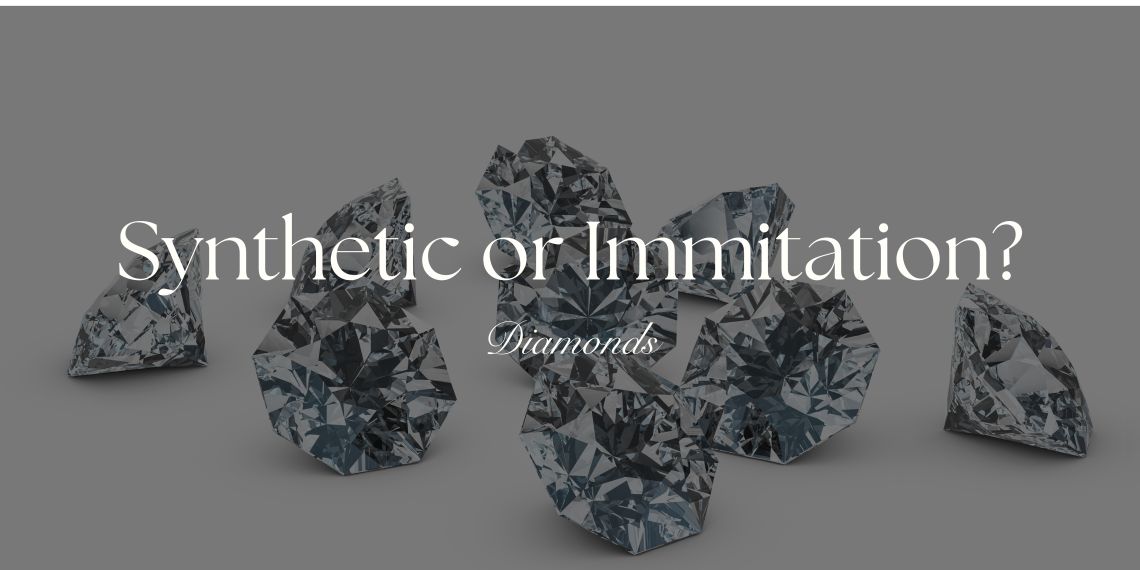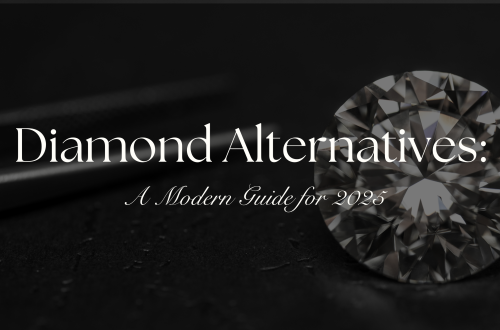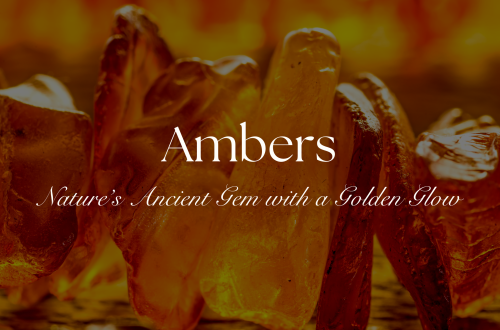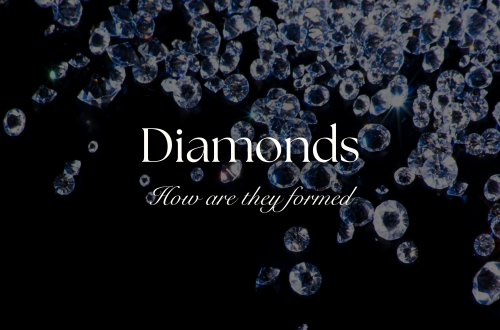Want Diamond Sparkle Without the Diamond Price Tag?
Whether you’re eyeing a lab-grown diamond or thinking about an imitation stone like cubic zirconia or moissanite, this clear, no-fluff guide breaks down what you actually need to know: composition, durability, cost, ethics, and how these stones hold up in real life.
Know Your Stones
Lab-Grown Diamonds (Synthetic Diamonds):
These are real diamonds, made of pure carbon, just like the ones mined from the earth. They’re created using high-pressure, high-temperature (HPHT) or chemical vapor deposition (CVD) methods, producing stones that look and behave exactly like natural diamonds.
Diamond Simulants (Imitations):
These stones mimic the look of diamonds but are made from different materials. Popular examples include cubic zirconia (CZ), moissanite, and white sapphire. They sparkle but aren’t chemically or physically identical to diamonds.
Chemical & Physical Details
Lab-Grown Diamonds:
- Structure: Pure carbon in a cubic crystal lattice.
- Hardness: 10/10 on the Mohs scale (hardest material).
- Sparkle: Identical to natural diamonds, with the same fire and brilliance.
Imitation Stones:
- Cubic Zirconia: Made of zirconium dioxide, rated around 8–8.5 on the Mohs scale. Flawless to the eye but scratches easily and often shows a rainbow sparkle that can look “too much.”
- Moissanite: Made of silicon carbide, extremely hard (9.5 Mohs), with intense fire and brilliance, though it sometimes shows double refraction under close inspection.
Durability & Daily Wear
- Lab-Grown Diamonds: Extremely durable, ideal for everyday rings or jewelry you never take off.
- Cubic Zirconia: Prone to scratches and can lose its shine over time, especially with daily wear.
- Moissanite: Very durable, though it may need occasional professional cleaning to maintain maximum sparkle.
Sparkle & Fire: How They Look
- Lab-Grown Diamonds: Classic, white sparkle that feels elegant and timeless.
- Cubic Zirconia & Moissanite: Show off bright rainbow flashes; eye-catching but can sometimes look less “diamond-like” to a trained eye.
Cost & Value
- Lab-Grown Diamonds: Generally 30–70% cheaper than mined diamonds, with prices continuing to drop as technology improves.
- Imitation Stones: Budget-friendly. CZ can cost under $30 per carat, while moissanite is more expensive but still far below the price of lab-grown or mined diamonds.
Ethics & Environmental Impact
- Lab-Grown Diamonds: Tend to have a much lower environmental impact than traditional mining, though the actual footprint varies depending on the energy sources used in production.
- Imitation Stones: Avoid mining, but their production processes vary widely in sustainability depending on the manufacturer.
Market Perception
- Lab-Grown Diamonds: Increasingly accepted, especially among younger buyers who value cost savings and sustainability. Some still see natural diamonds as more prestigious, but this is shifting.
- Imitations: Viewed as affordable alternatives, popular for fashion jewelry or as placeholders for an eventual diamond upgrade.
Certification & Testing
- Lab-Grown Diamonds: Can be certified by GIA, IGI, and other reputable labs, and often include laser inscriptions indicating their lab-grown status.
- Imitation Stones: Generally aren’t certified. Jewelers can identify them with specialized tests, such as thermal conductivity checks.
Which Should You Choose?
| Your Priority | Best Choice |
|---|---|
| Authentic diamond properties at lower cost | Lab-Grown Diamond |
| Lowest possible price for sparkle | Cubic Zirconia |
| Intense brilliance/fire | Moissanite |
| Maximum durability for daily wear | Lab-Grown or Natural Diamond |
| Ethical and environmental concerns | Lab-Grown Diamond |
Final Takeaway
✅ Lab-Grown Diamonds: Real diamonds with identical sparkle and durability, at a significantly lower price. Perfect if you want a forever piece without the mined diamond markup.
✅ Imitation Stones: Great for budget shoppers or fashion jewelry. They sparkle beautifully but won’t match a diamond’s longevity or precise optical properties.





